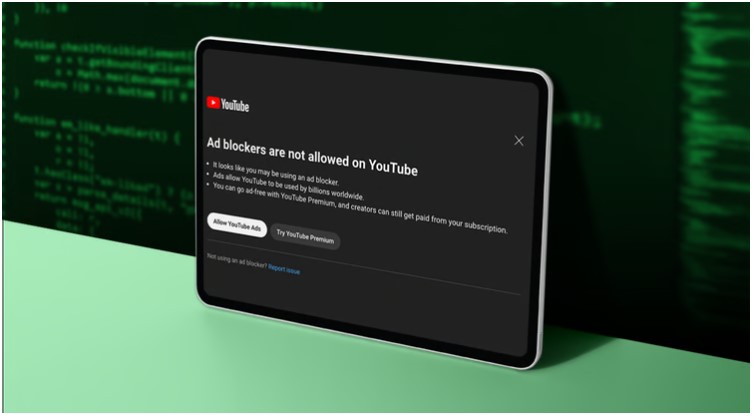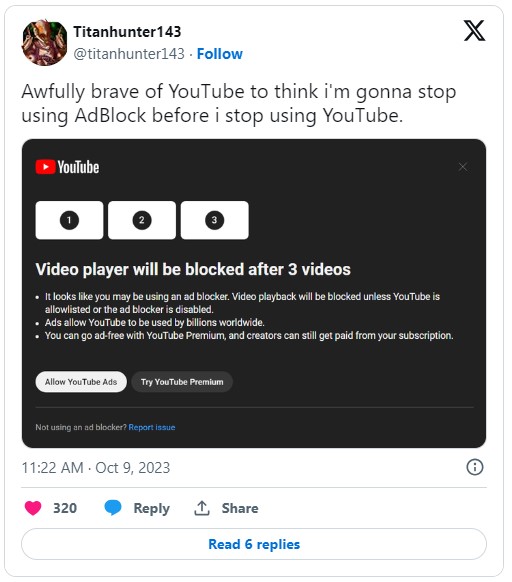We rely on advertisements. Without them, we simply wouldn’t have any income to pay the bills on the good ship Las Movie Outpost. As we grow, the bills simply go up! Hosts need more horsepower. Security certificates need to be renewed. Back-ups need storing. We are the very victims of our own success. It doesn’t mean we can’t agree with you guys that ads are a pain in the a$$ though. It seems many of you think this way. There are so many that YouTube has had enough of the little scamps.
YouTube has introduced an anti-adblock feature. This will let you know you have been busted through a friendly and informative pop-up right in the middle of your viewing experience.

As is the way with the constant arms race in this area of tech, the adblocking community is already working on ways to defeat the feature, but YouTube has already launched a pre-emptive strike by changing its detection scripts constantly, like the Borg with modulated phasers being fired at them.
The warning includes the option to go ad-free by signing up for YouTube premium and go legit. For now, closing the alert allows viewing the video. However YouTube can disable playback for repeated violations.
Increasingly privacy-savvy users have long sought to limit trackers and other privacy-intruding scripts as a matter of good housekeeping. Meanwhile, the Information Security industry has been making noises about the need to restrict exposure to ad networks as they can often be used to deliver spyware. This was the case with the Pegasus attack.
One user’s complaint on X has gone viral, with hundreds of thousands now chiming in with a similar message:

YouTube Premium subscription costs users $13.99 per month. YouTube changes its detection scripts twice a day, making it practically impossible for a layman to reliably apply a workaround. The Cybersecurity and Infrastructure Security Agency (CISA) recommends some form of ad blocking as part of general good internet use hygiene, as
“Adblocking software prevents different types of ads from displaying or removes them altogether, reducing the risk of receiving malicious advertisements or being redirected to malicious websites. A common adblocking technique uses web browser extensions that allow organizations to customize and control how online advertisements appear. CISA encourages organizations to evaluate solutions that would allow the ability to block a malicious advertisement.”
YouTube is not taking it lying down, and has fired back:
“We take disabling playback very seriously and will only disable playback if viewers ignore repeated requests to allow ads on YouTube. In cases when viewers feel they have been falsely flagged as using an adblocker, they can share this feedback by clicking on the link in the prompt.”
Meanwhile, our quest to monetize the site and retire to the Caribbean continues.
Check back every day for movie news and reviews at the Last Movie Outpost










